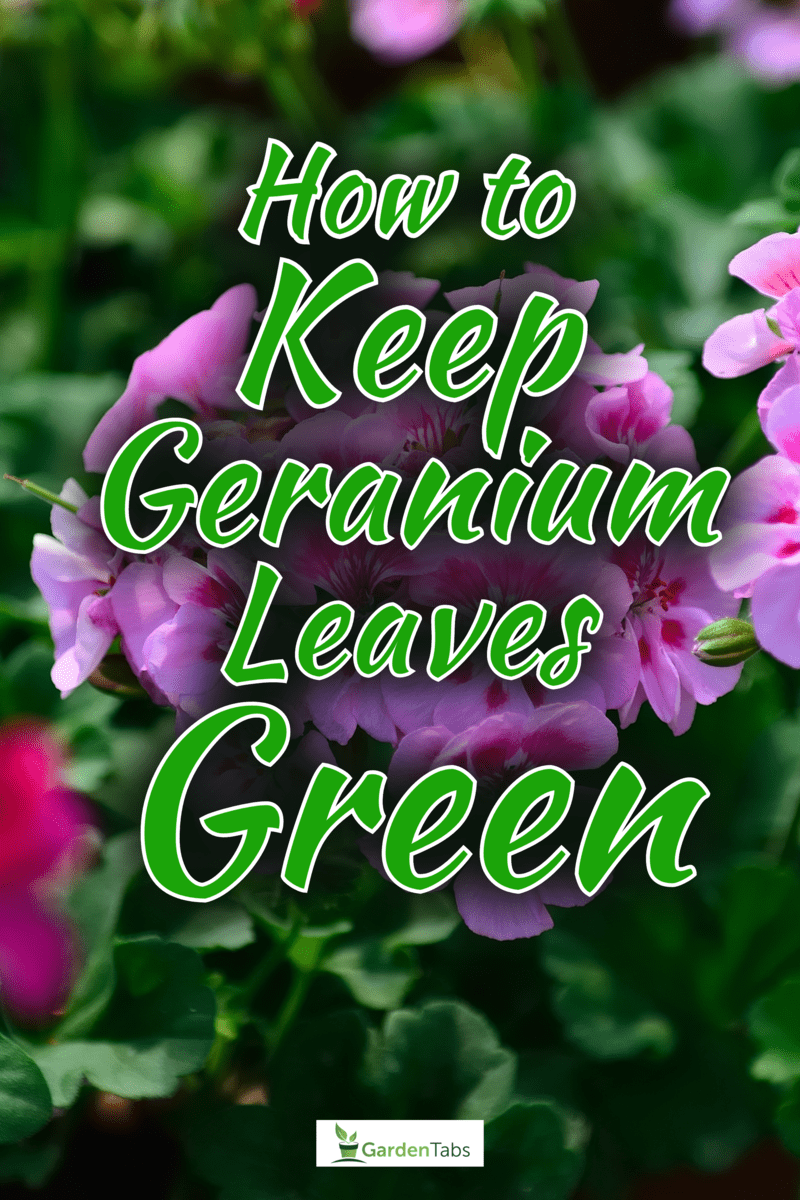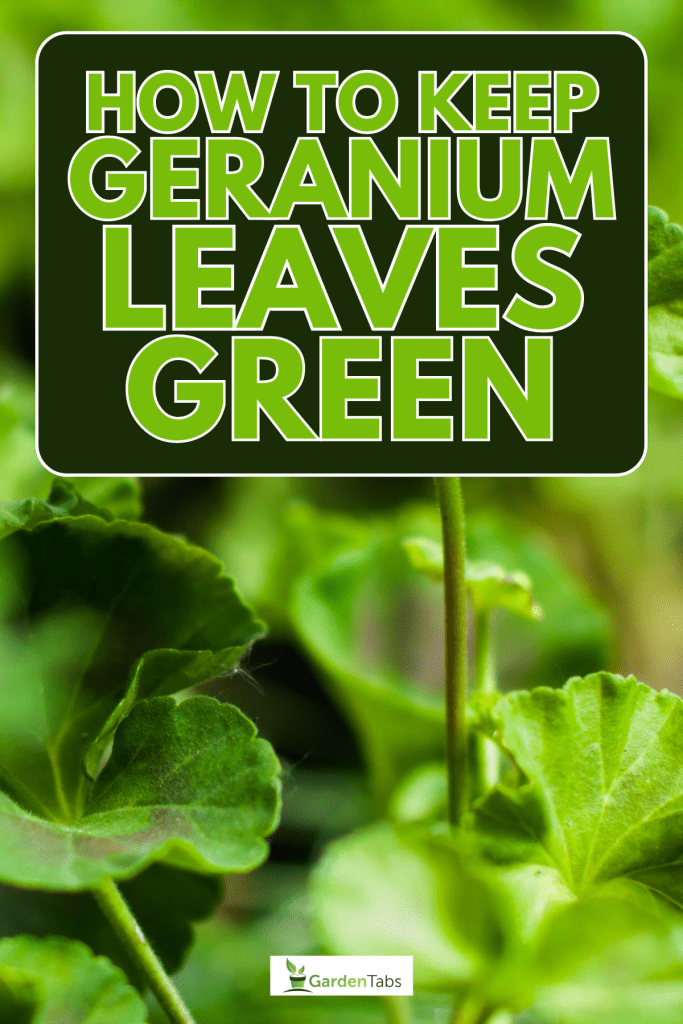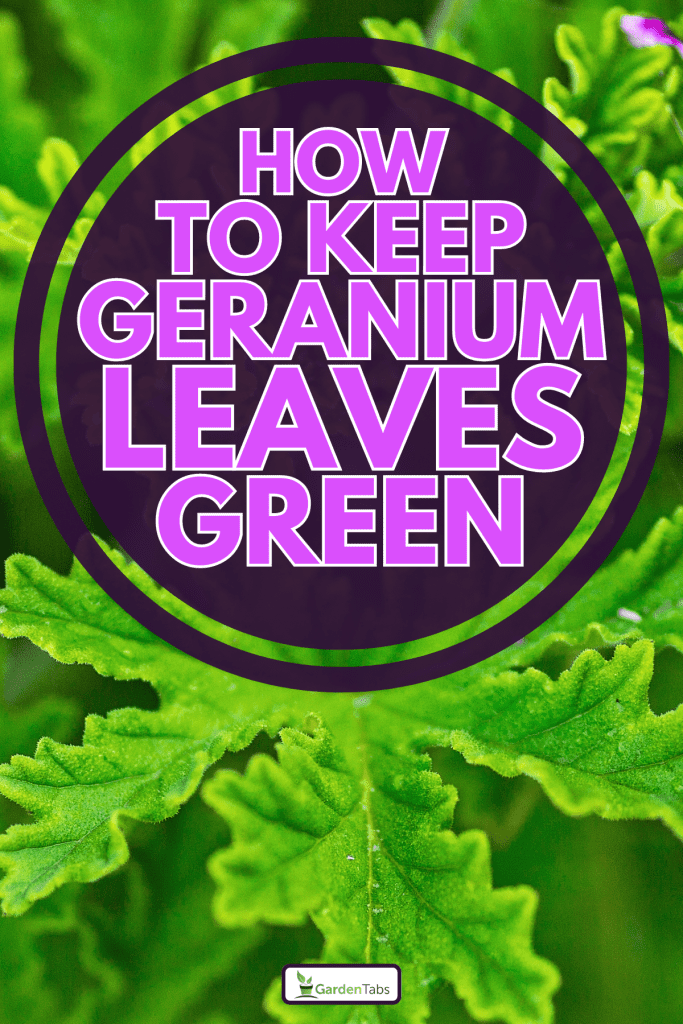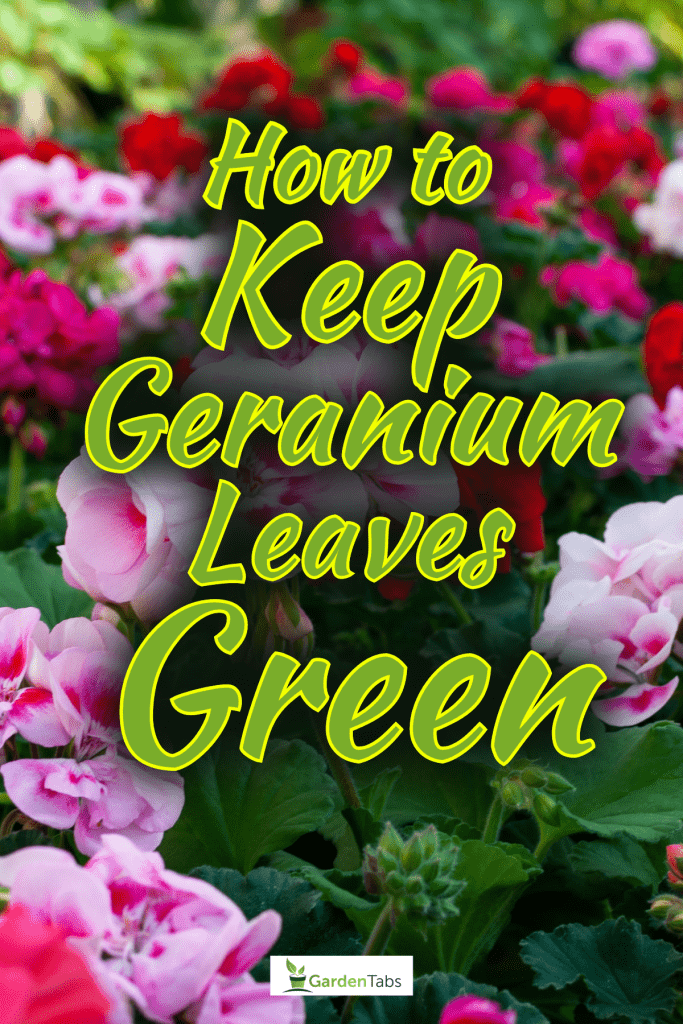Are you struggling to keep your geraniums green and healthy?
Don't worry! In this article, we'll reveal the top tips and tricks for ensuring your geraniums have healthy foliage and vibrant blooms.
From proper watering techniques to fertilizing and sunlight, we'll cover everything you need to know to keep your geraniums looking their best all year long.
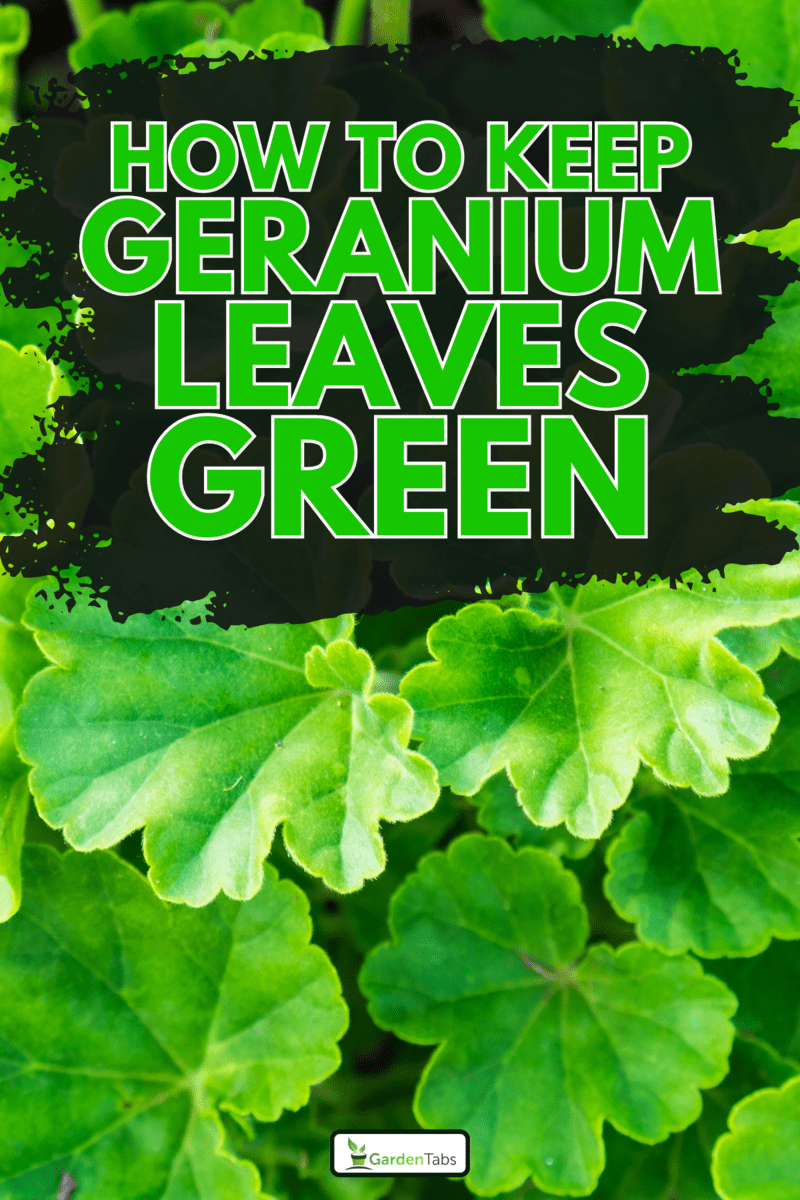
Tips for Keeping Geranium Leaves Green
Geraniums are a popular flowering plant known for their vibrant colors and lush foliage.
However, factors such as light, water, soil, and temperature can affect the color of their leaves.
You can follow these steps to keep your geranium leaves green and healthy.
Water Properly
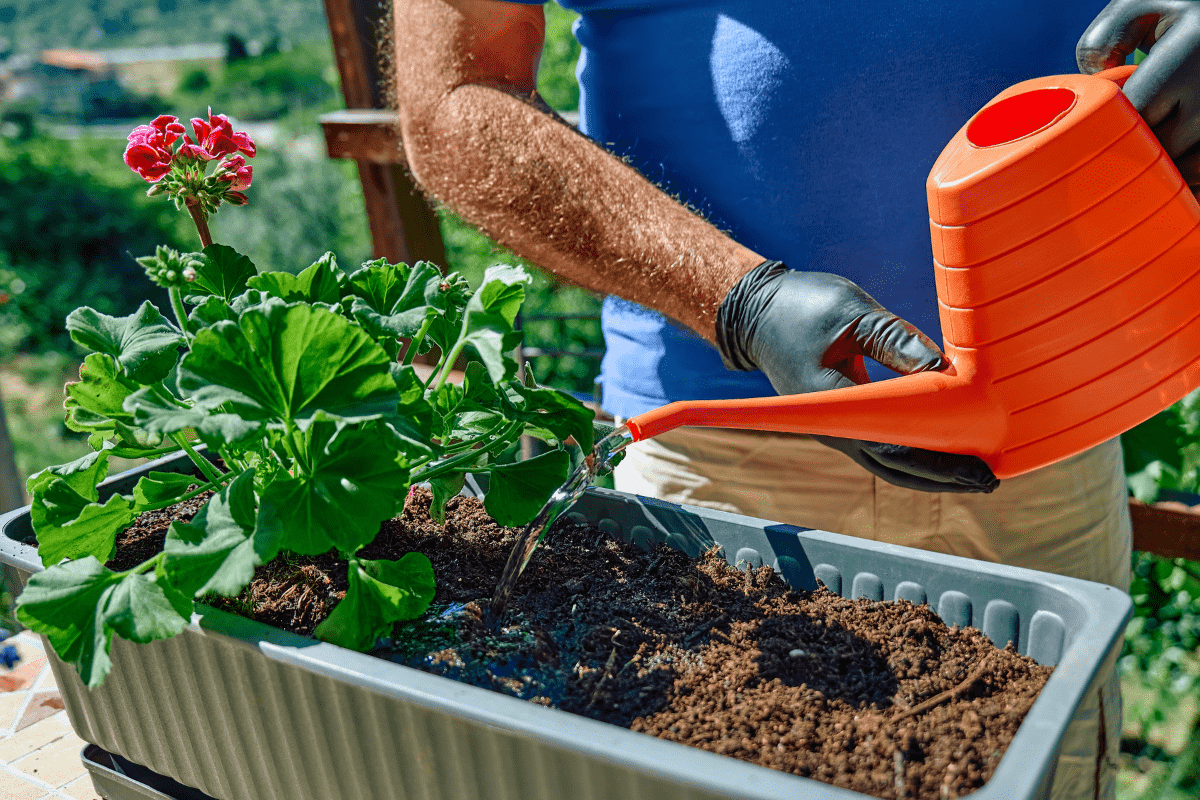
Proper watering is one of the most important factors in keeping geranium leaves green.
Underwatering and overwatering can cause problems for the plant.
Here are some indicators that you may be overwatering your geraniums:
Yellowing Leaves
Yellowing leaves are a common sign of overwatering. The leaves may turn yellow and wilt, and they may feel soft and mushy to the touch.
This yellowing indicates that the roots are suffocating and cannot absorb nutrients properly.
Root Rot
Root rot is a fungal disease that can occur when geraniums are overwatered. The roots will start to rot, turn brown or black, and may have a foul odor.
Root rot can lead to stunted growth, wilting, and, eventually, the death of the plant.
Wilting
Wilting is a sign that the roots cannot absorb water properly, and the plant is not getting the nutrients it needs to thrive.
Overwatering and underwatering can cause drooping and wilting. With underwatering, the leaves become dry and crispy.
Additionally, the stems may become weak and limp.
How Often Should You Water?
The frequency of watering geraniums depends on various factors, such as climate, soil type, and humidity.
Water your geraniums deeply but infrequently, allowing the soil to dry out slightly between waterings.
A good rule of thumb is to stick your finger in the soil and feel for moisture, then water only when the top inch of the soil feels dry to the touch.
Additionally, ensure the soil has good drainage to prevent water from pooling around the roots.
Add Fertilizer
Fertilizing your geraniums is another essential aspect of keeping their leaves green.
Use a balanced fertilizer, such as a 10-10-10 or 20-20-20 formula, every two weeks during the growing season.
Be sure to follow the manufacturer's instructions for application rates and methods.
What Is The Best Fertilizer For Geraniums?
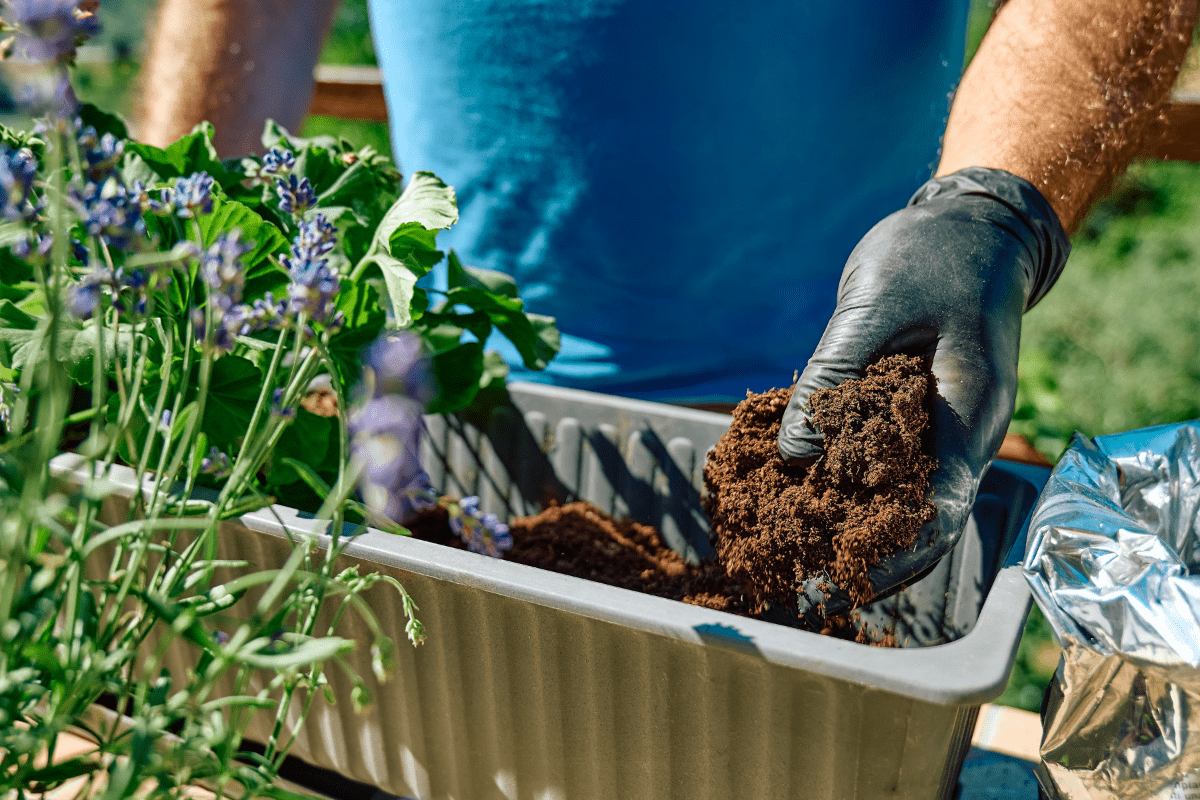
The best fertilizer for geraniums contains a mix of essential nutrients.
Geraniums need nitrogen, phosphorus, and potassium to grow healthy foliage.
Secondary nutrients like iron, zinc, and magnesium are also important.
Additionally, consider the type of fertilizer. You can opt for granular fertilizers or liquid fertilizers.
Granular fertilizers are slow-release and last for several weeks. Liquid fertilizers are fast-acting and easily absorbed by the plants.
You can also try organic fertilizers, such as compost or worm castings, which are gentle and provide long-lasting nutrients to the soil.
Read this post to find out more about fertilizing geraniums: 9 Best Fertilizers For Geranium [Gardening Advice & Suggestions]
Prune Regularly
Pruning is an important part of geranium care that helps to promote healthy growth and keep the leaves green.
Regular pruning encourages bushy growth and prevents the plant from becoming leggy.
You should remove any dead, yellowing, or diseased leaves to prevent the spread of disease.
Cut back overgrown stems to encourage new growth and remove spent blooms to encourage more flowers.
Check For Pests and Diseases
Keeping your geraniums free from pests and diseases is essential for healthy foliage.
Check your plants regularly for pests like spider mites or aphids and treat them with insecticidal soap or neem oil.
Prevent fungal diseases like powdery mildew by making sure the plants have good air circulation and avoiding overhead watering.
Provide Sufficient Sunlight
Geraniums need at least four to six hours of sunlight per day to grow and thrive. They prefer full sun or partial shade, depending on the variety.
Read this post to learn more: Do Geraniums Need Full Sun?
Monitor The Temperature
Geraniums prefer warm temperatures and can be sensitive to cold snaps.
Ensure your geraniums are planted in a warm location and protect them from cold temperature.
You can bring them indoors or cover them on frosty nights.
Should You Cut Off Yellow Geranium Leaves?
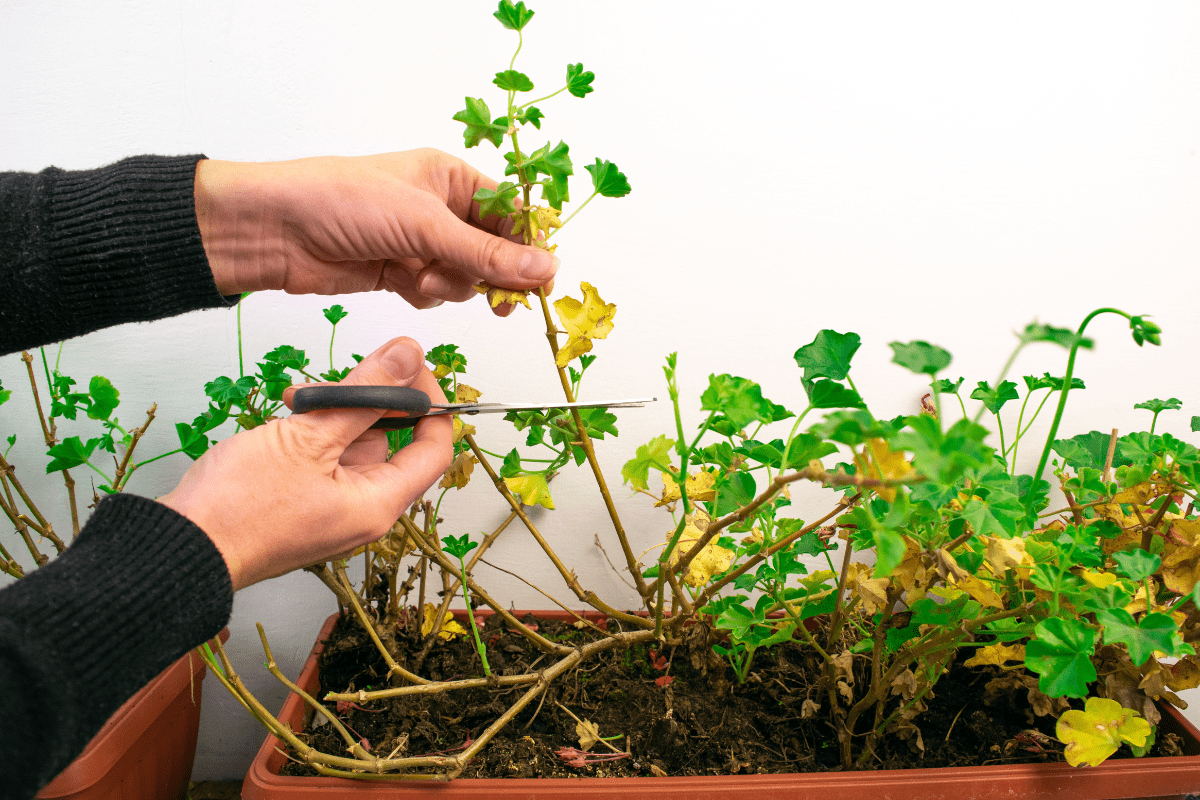
Before you cut off yellow geranium leaves, you should understand the underlying issues that caused the yellowing.
If you address the issues, the leaves may turn green again. For example, if the plant is overwatered, reducing the amount of water can help the leaves turn green again.
If the yellow leaves are caused by a disease or pest infestation, you may need to remove the leaves to prevent the problem from spreading to other parts of the plant.
When trimming the leaves, use clean, sharp scissors to avoid damaging the plant.
How To Bring Geraniums Back To Life
If your geraniums are looking a little worse for wear, don't worry! You can do several things to revive them.
Check Soil pH
Geraniums require slightly acidic soil with a pH between 5.8 and 6.5. You can test the soil pH with a soil pH meter or a soil test kit.
If the soil is too acidic or too alkaline, it can cause nutrient deficiencies and other problems.
Fertilize
Geraniums are heavy feeders and require regular fertilization to stay healthy. You can use a fertilizer specifically formulated for geraniums to help revive them.
Prune
Pruning your geraniums can help promote new growth and improve their overall health. You can also pinch back the tips of the stems to promote branching.
Repot
If your geraniums are root-bound or the soil is lacking nutrients, repotting them can help revive them.
Choose a pot that is slightly larger than the current pot and use a well-draining potting mix.
Remember to gently loosen the roots and remove any dead or damaged ones before planting in the new pot.
To Recap
Proper watering techniques, fertilizing, pruning, and pest and disease control can help keep geranium leaves green and healthy.
You should also make sure your geraniums get the right amount of sunlight and monitor the temperature to protect them from cold snaps.
If your geraniums are looking droopy, you can revive them by adding fertilizer, amending the soil, and repotting them.

